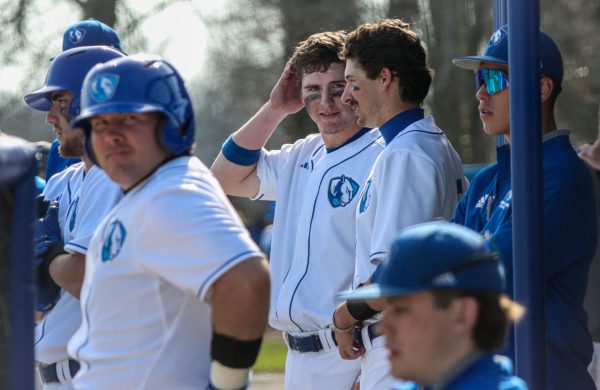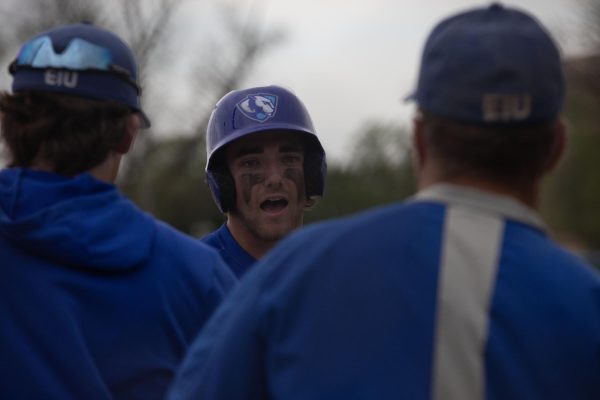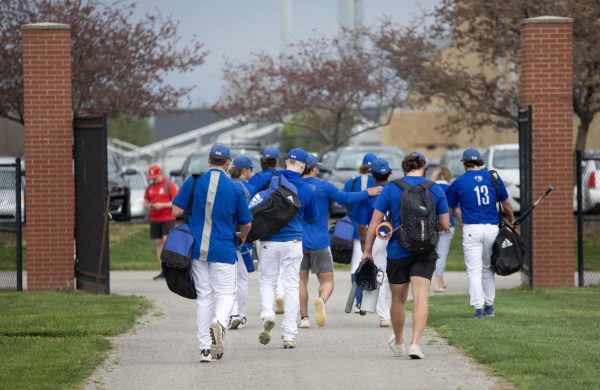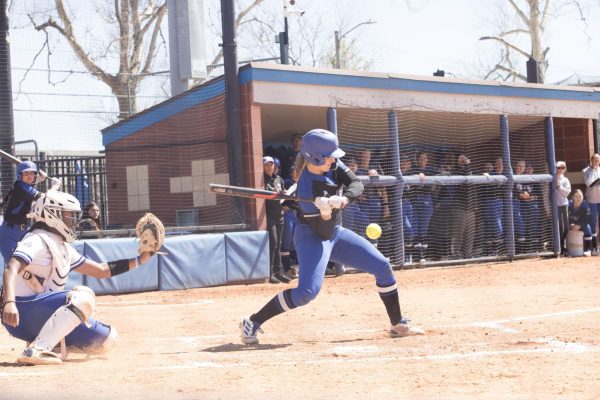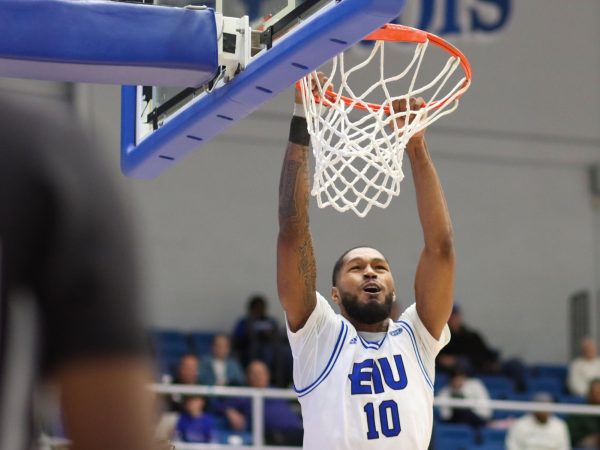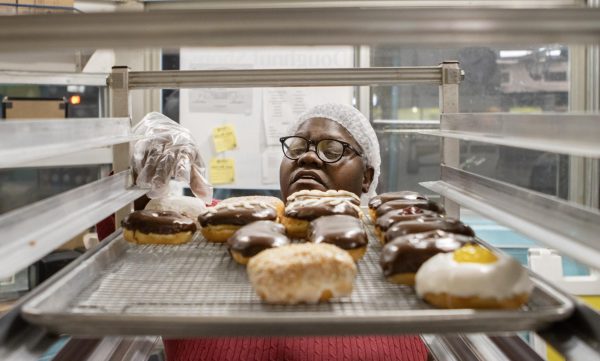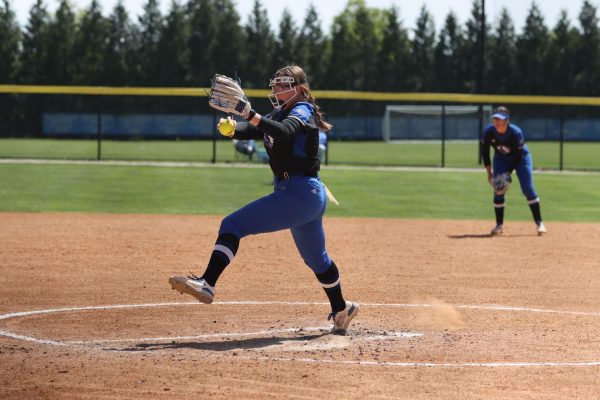Ancient tribe inspires art
Artist Jim Krehbiel spoke at the Atrium in the Tarble Arts Center Tuesday night about his art exhibit and explorations of the southwest United States. His exhibit showcases works from his various travels including pieces highlighting the art and astronomy of the ancestral Pueblo peoples.
Krehbiel, a Charleston native, now works with Ohio Wesleyan University as the chair of arts department. His art is mostly digital in nature, but he often uses multiple layers and incorporates his sketches and photography to create one product.
“I do the exact same thing in printmaking as I do in digital,” Krehbiel said.
For 35 years, Krehbiel has explored sites in the Southwest United States. His position allows him to tap into two of his passions, the passion for art and the passion to explore. He teaches digital photography at the university and during summers he travels to explore and create art.
“It’s really important for us to be professionals, we’re making artwork about very important things,” Krehbiel said.
Michael Watts, director of the Tarble Arts Center, said he believes Krehbiel’s artwork is important to everyone.
“(Krehbiel’s art) is a very interesting combination of ancient technology, ancient Pueblo peoples’ shrines and glyphs used to mark or track the movements of the sun and moon, among other things, and new technology like Photoshop and digital printing. Krehbiel’s art shows that activity from a culture remote from ours can still have resonance and meaning today,” Watts said.
Jeff Boshart, an Eastern sculpting professor, proposed Krehbiel return to Eastern for a lecture.
“I wanted (Krehbiel) to come back to show his artwork. He’s a fantastic photographer and brings superb artwork,” Boshart said. “He will overwhelm you with his technical and aesthetic knowledge and also his incredible passion for what he does.”
Boshart explained that Krehbiel is not only an artist but an explorer too.
“Krehbiel’s seen things that no one has ever seen before and has this enthusiasm to create artand discover, to blend and create, to make connections no one has ever made before,” Boshart said.
During his lecture Tuesday, Krehbiel showed some digital images of some of the locations that have never been seen before.
“The sites at national parks have three classifications,” Krehbiel said. “Class one you can go visit, they are protected and controlled but open for public access. Class two, park rangers are not allowed to talk about unless you found them on your own. Class three, there’s a good chance no one knows anything about them and you’re not allowed to talk to rangers about these sites if you find them.”
Most of his recent work is from class-three sites and he strives to preserve their privacy.
“I have major concerns about in two years that 200 or 300 people being at these sites but what can you do?” Krehbiel said.
One specific rock structure Krehbiel showed was built to capture sunlight at different levels in the sky, creating light beams below.
Such a structure could not be built without prior knowledge of the summer and winter solstices and the degrees of the sun in the sky. This helps to prove ancient Pueblo people understood astronomy as we do today.
The goal of Krehbiel’s artwork is to tie in the visual aspects of these cultures with their use. His artwork ties into archaeoastronomy, which, according to archaeoatronomy.com, spotlights the dawn of human history. His works focus on how ancient civilizations used astronomy in their lives through these art pieces or daily practices. Through archaeology, this study shows how ancient societies lived and made discoveries that still influence us today.
James Conwell, an Eastern physics professor, is a friend of Krehbiel’s and he is excited to see what he brings to the Tarble Arts Center this time around.
“Last time he only brought slides. This time he’s bringing a lot of things from the actual [dig] sites,” Conwell said.
“Archaeoastronomy is religion, art, science and somehow Kriehbiel has managed to find a middle to those things through his art. His art is right in that little niche,” Conwell added.
Krehbiel’s art displays the advanced side of cultures that have never been seen before.
“This particular project is discovering a whole bunch of different sites that have never been found before,” Conwell said. Krehbiel shows how sophisticated these societies are through his art.”
This September will mark Krehbiel’s second exhibit at Eastern.
His exhibits are free to the entire community and they are shown until Eastern’s homecoming.
“Instead of just seeing projected images of Krehbiel’s art, his actual artwork will be on view at the Tarble,” Watts said.
“Krehbiel is the whole package; life, liberty, love, happiness,” Boshart said.
Megan Tkacy can be reached at 581-7942 or at [email protected]



































